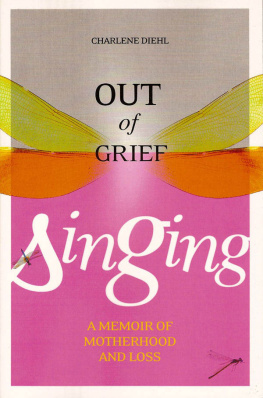Diehl Karen - Europe and Love in Cinema
Here you can read online Diehl Karen - Europe and Love in Cinema full text of the book (entire story) in english for free. Download pdf and epub, get meaning, cover and reviews about this ebook. City: Bristol;Europe, year: 2012, publisher: intellect, genre: Romance novel. Description of the work, (preface) as well as reviews are available. Best literature library LitArk.com created for fans of good reading and offers a wide selection of genres:
Romance novel
Science fiction
Adventure
Detective
Science
History
Home and family
Prose
Art
Politics
Computer
Non-fiction
Religion
Business
Children
Humor
Choose a favorite category and find really read worthwhile books. Enjoy immersion in the world of imagination, feel the emotions of the characters or learn something new for yourself, make an fascinating discovery.

- Book:Europe and Love in Cinema
- Author:
- Publisher:intellect
- Genre:
- Year:2012
- City:Bristol;Europe
- Rating:4 / 5
- Favourites:Add to favourites
- Your mark:
- 80
- 1
- 2
- 3
- 4
- 5
Europe and Love in Cinema: summary, description and annotation
We offer to read an annotation, description, summary or preface (depends on what the author of the book "Europe and Love in Cinema" wrote himself). If you haven't found the necessary information about the book — write in the comments, we will try to find it.
Europe and Love in Cinema — read online for free the complete book (whole text) full work
Below is the text of the book, divided by pages. System saving the place of the last page read, allows you to conveniently read the book "Europe and Love in Cinema" online for free, without having to search again every time where you left off. Put a bookmark, and you can go to the page where you finished reading at any time.
Font size:
Interval:
Bookmark:
Europe and Love in Cinema
Europe and Love in Cinema
Edited by Luisa Passerini, Jo Labanyi and Karen Diehl

First published in the UK in 2012 by
Intellect, The Mill, Parnall Road, Fishponds, Bristol, BS16 3JG, UK
First published in the USA in 2012 by
Intellect, The University of Chicago Press, 1427 E. 60th Street, Chicago, IL 60637, USA
Copyright 2012 Intellect Ltd
All rights reserved. No part of this publication may be reproduced, stored in a retrieval system, or transmitted, in any form or by any means, electronic, mechanical, photocopying, recording, or otherwise, without written permission.
A catalogue record for this book is available from the
British Library.
Cover designer: Holly Rose
Copy-editor: Michael Eckhardt
Typesetting: John Teehan
ISBN 978-1-84150-379-0
Printed and bound by Hobbs, UK
Contents
Thomas Elsaesser
Andrew Higson
Tim Bergfelder
Laura Mulvey
Luisa Passerini
Jo Labanyi
Sen Allan
Liliana Ellena
Enrica Capussotti
Luisa Accati
Lucy Mazdon
Karen Diehl
List of illustrations
Figure 1. British publicity material for The Road to Happiness (Curtiz, 1926; prod. Sascha/ Phoebus). Source: British Film Institute Special Collections.
Figure 2. British publicity material for Red Heels (Curtiz, 1926; prod. Sascha). Source: Kinematograph Weekly, January 1926.
Figure 3. Crossing the water, traversing boundaries La Habanera (Sirk, 1937; prod. Ufa).
Figure 4. Crossing the water, traversing boundaries The Edge of Heaven (Akn, 2007; prod. Anka Film/Dorje Film/NDR).
Figure 5. Fanny and Allan: the end of the roller coaster ride Hindle Wakes (Elvey, 1927; prod. Gaumont British Picture Corporation).
Figure 6. Shosho and Valentine: this is our Piccadilly Piccadilly (Dupont, 1929; prod. British International Pictures).
Figure 7. Poster for La dame de Malacca (Allgret,1937; prod. Rgina). Source: Luisa Passerini, Enrica Capussotti and Giuseppe Lauricella (2003), Moving History (multimedia CD-ROM), Florence: European University Institute.
Figure 8. Audrey in Hindu dance costume, contemplating herself before wiping the sign of Shiva off her forehead La dame de Malacca (Allgret, 1937; prod. Rgina). Source: Luisa Passerini, Enrica Capussotti and Giuseppe Lauricella (2003), Moving History (multimedia CD-ROM), Florence: European University Institute.
Figure 9. Poster for Harka! (Arvalo, 1941; prod. Arvalo P. C./Cifesa), foregrounding the romantic relationship between Carlos and Amparo, which he will renounce for Africa. Source: Filmoteca Espaola. Video Mercury Films.
Figure 10. Captain Andrade and his Tuareg princess lover, Halima La llamada de frica (Ardavn, 1952; prod. Hesperia Films). Source: Filmoteca Espaola. Csar F. Ardavn.
Figure 11. The funeral Good Bye, Lenin! (Becker, 2003; prod. X-Filme Creative Pool/ WDR/WDR-Arte).
Figure 12. Piet I: Wiesler with the dying Sieland The Lives of Others (von Donnersmarck, 2006; prod. Arte/BR/Creado Film/Wiedemann & Berg Filmproduktion).
Figure 13. Piet II: Dreyman with the dying Sieland The Lives of Others (von Donnersmarck, 2006; prod. Arte/BR/Creado Film/Wiedemann & Berg Filmproduktion).
Figure 14. Aime and Prote look at each other in the mirror Chocolat (Denis, 1988; prod. Caroline Productions/Cerito Films/Cinmanuel/La Sept Cinma/Le FODIC Cameroun/MKZ Productions/TFI Films Production/Wim Wenders Productions).
Figure 15. Zano and Nama battle their way through the flood of emigrants on arrival in Algeria Exils (Gatlif, 2004; prod. Princes Films/Pyramide Productions/Cofimages 15/ Canal +/ITPS Cinma/TV5 Monde/Nikkaton/Nave).
Figure 16. The migrants final departure Poniente (Gutirrez, 2002; prod. Amboto Audiovisual/Amboto P. C./Antena 3/Olmo Films/Via Digital).
Figure 17. The Mediterranean as home Tornando a casa (Marra, 2001; prod. Classic).
Figure 18. Conchita (Carole Bouquet) cradles Mathieu in her arms Cet obscur objet du dsir (Buuel, 1977; prod. Greenwich Film Productions/Les Films Galaxie/Incine).
Figure 19. Paco, Nino and Baptiste play Bonjour la France Western (Poirier, 1997; prod. Salom/Diaphana Films/Canal +/CNC).
Figure 20. Mara marks the spot for the kill with lipstick Matador (Almodvar, 1986; prod. Cia. Iberoamericana de TV/TVE).
Figure 21. Watching screen kisses Nuovo Cinema Paradiso (Tornatore, 1988; prod. Cristaldifilm/Les Films Ariane/Pete 3/TFI Films Production/Forum Picture).
Introduction
T his book brings together the work of cultural historians and film scholars. Its aim is to explore the cultural implications of the treatment of love in a number of European fiction films made in Britain, France, Germany, Spain, Italy and Greece from the 1920s to the present. The book is not a straightforward contribution to film studies it does not attempt to offer a historical overview of European cinema (many such volumes already exist), nor does it set out to analyse the cinematographic style of the genres and directors discussed. Rather, positioning itself at the interface between cultural history and film studies, it asks what the analysis of film can offer to an understanding of the history of subjectivity. Our concern is not so much with individual subjectivity as with the cultural imaginary of particular societies at specific historical moments. Cinema and particularly popular cinema is an especially valuable vehicle for study of the cultural imaginary since it plays to mass audiences.
The premise underlying this volume is that films express powerful fantasies about what is felt to be desirable or undesirable. Given this, it is not surprising that so many fiction films should be love stories, by definition inviting audience identification with particular models of desire, whose success or failure sets up norms for what may or may not legitimately be desired. As so much cultural studies scholarship has demonstrated (in film studies, see for example Stacey 1992 and Kuhn 2002), interpretation involves a negotiation between the possible meanings allowed by the text and the emotional needs of the consumer a negotiation that is central to the construction of a sense of identity. This is a complex process: in the course of the narrative, films trigger in spectators a series of identifications that are mobile and plural. What matters in a love story is not only the ending (often conventional) but the travails experienced by the protagonists along the way, and ones identifications can move between different characters or attach themselves simultaneously to characters who are antagonists. Nevertheless, while spectatorship is always negotiated and identification is never fixed or monolithic, we should remember Ella Shohat and Robert Stams reminder that the film apparatus can make spectators identify with characters who do not represent their own interests: non-white viewers, too, find themselves cheering as the cowboys kill the Indians (1994: 34748).
This collection of essays grew out of the collaborative work for the international research project Europe: Emotions, Identities, Politics based at the Kulturwissenschaftliches Institut, Essen (Germany) from 2002 to 2004. The research team, directed by Luisa Passerini and including Jo Labanyi as a participant, was created thanks to a research prize of the Land of Nordrhein-Westfalen awarded to Luisa Passerini for that period. Several single-authored and edited volumes from that research collaboration have been published (Passerini 1999; Passerini and Mas 2004; Passerini 2009; Passerini, Ellena and Geppert 2010). Since cinema was a significant focus in this project, a later workshop Europe in Cinema, Cinema in Europe was held at the University of Southampton (UK) in 2005, organized by Jo Labanyi and funded by the European Science Foundation, to further discuss films potential for European identity formation. Both Luisa Passerini and Karen Diehl participated in the Southampton workshop.
Next pageFont size:
Interval:
Bookmark:
Similar books «Europe and Love in Cinema»
Look at similar books to Europe and Love in Cinema. We have selected literature similar in name and meaning in the hope of providing readers with more options to find new, interesting, not yet read works.
Discussion, reviews of the book Europe and Love in Cinema and just readers' own opinions. Leave your comments, write what you think about the work, its meaning or the main characters. Specify what exactly you liked and what you didn't like, and why you think so.








